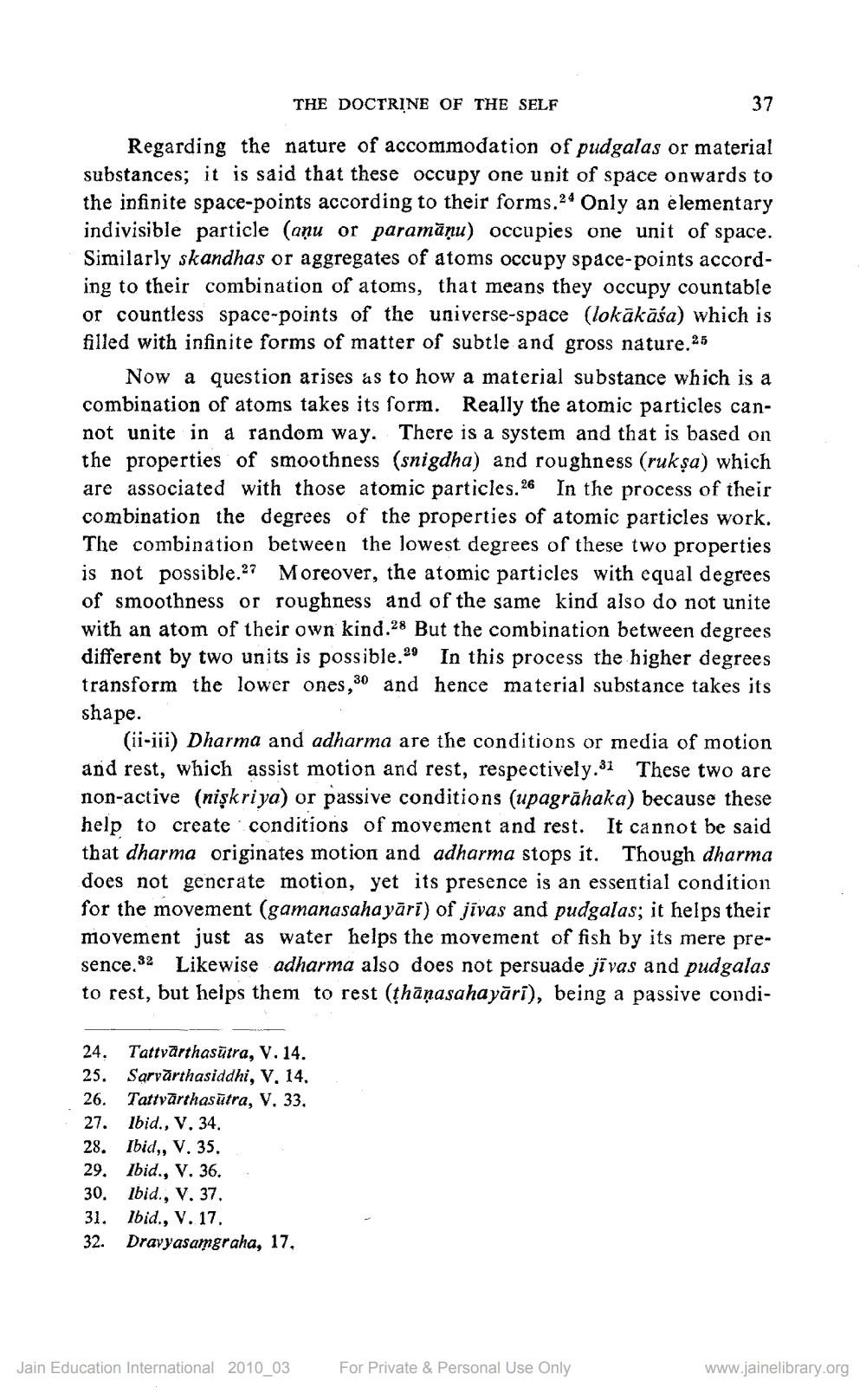________________
THE DOCTRINE OF THE SELF
37
Regarding the nature of accommodation of pudgalas or material substances; it is said that these occupy one unit of space onwards to the infinite space-points according to their forms,24 Only an elementary indivisible particle (anu or paramāņu) occupies one unit of space. Similarly skandhas or aggregates of atoms occupy space-points according to their combination of atoms, that means they occupy countable or countless space-points of the universe-space (lokākāśa) which is filled with infinite forms of matter of subtle and gross nature.25
Now a question arises as to how a material substance which is a combination of atoms takes its form. Really the atomic particles cannot unite in a random way. There is a system and that is based on the properties of smoothness (snigdha) and roughness (ruksa) which are associated with those atomic particles, 26 In the process of their combination the degrees of the properties of atomic particles work. The combination between the lowest degrees of these two properties is not possible.27 Moreover, the atomic particles with equal degrees of smoothness or roughness and of the same kind also do not unite with an atom of their own kind.28 But the combination between degrees different by two units is possible.29 In this process the higher degrees transform the lower ones,30 and hence material substance takes its shape.
(ii-iii) Dharma and adharma are the conditions or media of motion and rest, which assist motion and rest, respectively.31 These two are non-active (niskriya) or passive conditions (upagrāhaka) because these help to create conditions of movement and rest. It cannot be said that dharma originates motion and adharma stops it. Though dharma does not generate motion, yet its presence is an essential condition for the movement (gamanasahayāri) of jīvas and pudgalas; it helps their movement just as water helps the movement of fish by its mere presence, 32 Likewise adharma also does not persuade jīvas and pudgalas to rest, but helps them to rest (thāṇasahayārī), being a passive condi
24. Tattvārthasūtra, V. 14. 25. Sarvărthasiddhi, V. 14. 26. Tattvārthasūtra, V. 33. 27. Ibid., V. 34. 28. Ibid,, V. 35. 29. Ibid., V. 36. . 30. Ibid., V. 37. 31. Ibid., V. 17. 32. Dravyasamgraha, 17.
Jain Education International 2010_03
For Private & Personal Use Only
www.jainelibrary.org




